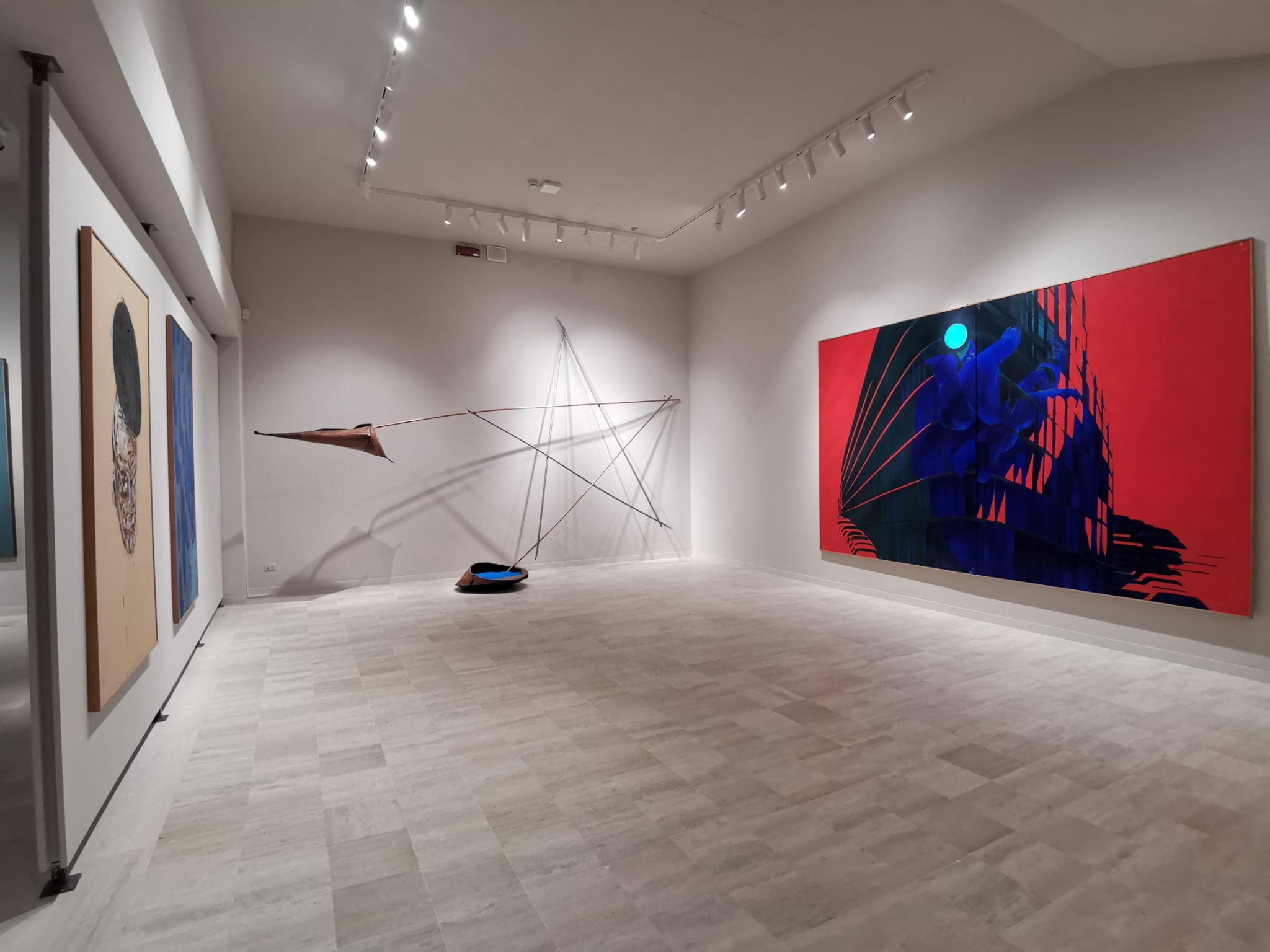
Collections from the 900 to the Contemporaneity
The choice to create a visual dialogue among the works of the 700 and the contemporary derives from the will to reflect about the way of interpreting and observing art, which is born on one hand from the church commissions and on the other hand, in the majority of cases, from the intimate and deep necessity of the artist’s research. Therefore with the intent on allowing a full using of the collection, the exhibition itinerary develops, at your choosing, both in a chronological and in a thematic way.
The collections’ preparation of the 900 has the aim to give a historical and artistic chronological narration back. This narration retraces the main stages of Italian art from the post-war period to our days, interweaving the artistic trends manifested in the great cultural institutions, such as the Venice Biennale, with the most experimental currents.
The itinerary opens with a section dedicated to sculpture, which emerged between the half of the forties and the early fifties, in which the metamorphosis of representation into an earlier form of informal abstraction is already visible. The artistic evolution is mainly represented through the pictorial testimonies of the sixties and seventies, years in which different expressive needs emerge, from the forms of naturalism and realism, to those which result in the movement of the conceptual and its variants in which processes of subjectivation, individual research and the drama of existence emerge.
The section dedicated to the contemporary art retraces the main stages of the italian art from the post-war period until the 1980s. The contemporary collection also shows Klimt with a female nude and works of the abstract current to the works of Cattelan and Banksy. Two works by Alberto Burri and Daniel Buren have also recently joined the collection.
The collection also swarms the outdoor garden with the sculpture of Mimmo Paladino 5 meters high depicting a horse with simple and archaic traits. The collection continues to be enriched with works by living artists such as the installation Sacral of Edoardo Tresoldi, exhibited in the cloister.
